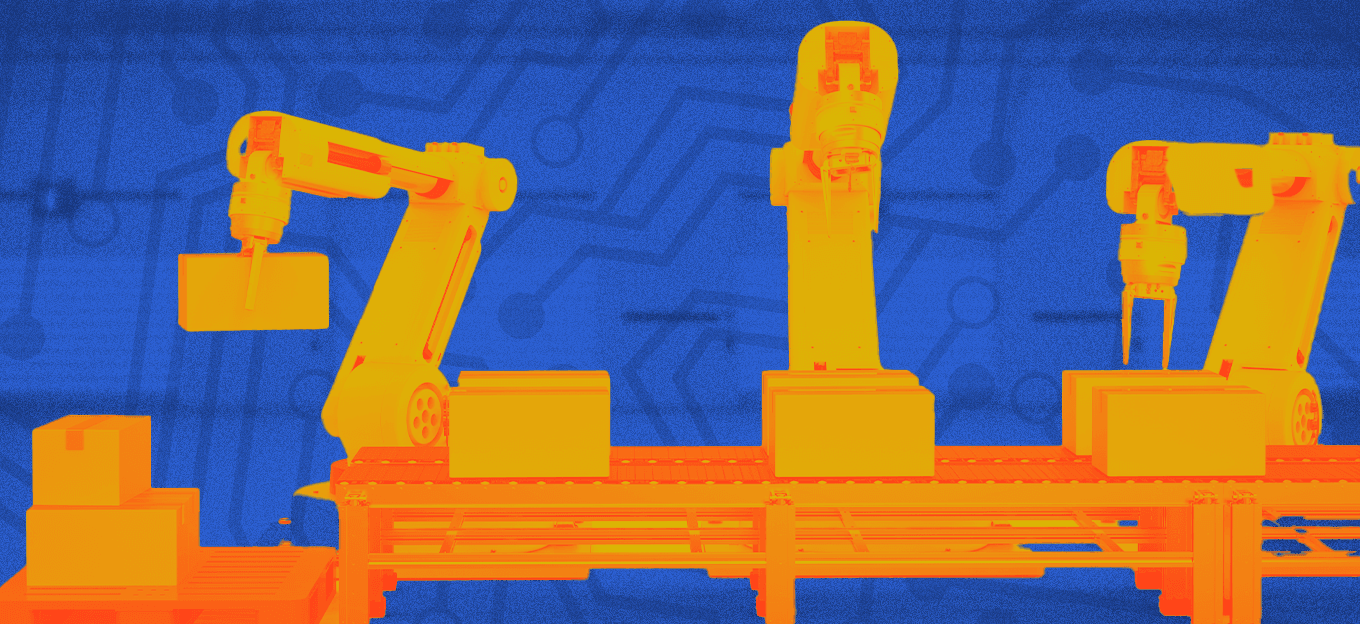From IoT to IIoT to Industry 4.0: The Evolution Industry
From IoT to IIoT to Industry 4.0: The Evolution Industry
- Last Updated: December 2, 2024
Coresystems
- Last Updated: December 2, 2024



When Kevin Ashton coined the term "Internet of Things" (IoT) in 1999, he was giving a name to the idea that physical objects could be connected to a network—namely, the Internet. The fact that computers no longer needed to be programmed with all the information required to function, but could instead sense the world around them and thus arrive at facts and figures without added human intervention, had ushered in a new era of computational technology. From the all-pervasive GPS to smart homes and smart cars to health and fitness monitoring devices, IoT has evolved. It has set the stage for the next industrial revolution: the Industrial Internet of Things (IIoT).
What Exactly Does "the Internet of Things" Mean?
A smart homeowner on the way home from work opens an app on her mobile device. A few clicks and swipes later, she has turned up her home heating system, switched on her living room lights, and checked the status of her refrigerator to see what she has to pick up from the supermarket. She steps into her vehicle and her phone immediately connects to her car sound system and starts playing the last track she was listening to on Spotify on the way into the office. There’s a brief interruption: ping. Her smart city app notifies her of a fallen tree on a road along her route. She maps out the next fastest way to get to the supermarket and then home.
Her whole experience was powered by IoT. All of the devices—from the lights to the temperature regulation controls to the audio system to the refrigerator—are things connected to the Internet. The devices, and their inputs and outputs, can all be viewed, accessed, and analyzed from the simplest and most accessible digital device on the planet: her mobile phone. This connectivity, which relies on built-in sensors to accumulate insight and information, makes it possible to aggregate and simplify heterogeneous data to determine new and better courses of action.
What Is IIoT?
The Industrial Internet of Things (IIoT) has taken this commercial technology even further and applied it on a much broader scale. This has led to innovations like the smart factory and predictive technology. By outfitting industrial machines with sensors and equipping employees all across the supply and delivery chains with the tools to monitor and respond to the output from these sensors, companies have begun to streamline all business operations.
What does this mean? What is IIoT really doing to the industrial sector? Simply put, IIoT is paving the way for a complete transformation of routine business processes from ordering to delivery to maintenance to production and so much more. Warehouse sensors allow companies to monitor stock intelligently so that parts and supplies are ordered when necessary. This prevents overstocking and understocking of essential items. Sensors along the delivery chain make it possible to track shipments from the moment they leave the factory floor to the moment they arrive with the customer. Sensors along the production line lead to early detection of potential breakdowns. By relying on predictive maintenance to fix problems before they occur, companies avoid costly downtimes and breaks in production. All these applications improve efficiency, minimize unnecessary expenses, and maximize quality.
Real-Time Responses and Crowd Services
IIoT has created a shift in company and consumer expectations. The easy access to information, products, and services that our mobile devices offer us has led to an increased demand for real-time systems and responses. This is even more prevalent in IIoT. As sensors provide up-to-the-minute insight and information about warehouses and machines, a greater need for immediate, or real-time, services has arisen. The reason is clear: IIoT, this connection of industrial machines and sensors to the Internet and other devices, is pointless without mechanisms in place to react to notifications and updates. There is no sense in knowing about imminent problems or shortages if there is no way to respond with the necessary speed and accuracy to avert potential issues.
This shortage has given birth to a whole other innovation: Crowd Services. Companies pool together all their resources—employees, partners, subcontractors, freelance specialists, and experts—to create a pool of available service providers to respond to the increased demand generated by real-time services. This crowd relies on field service management software and their mobile devices to stay informed of service requests, product information, customer history and more.
Industry 4.0
Thanks to IIoT, it is possible to amalgamate all this data—sensor output, customer input, service provider availability, knowledge, and more—to make available accurate and effective real-time responses: first-time-fixes. And this is how we have found ourselves on the verge of the next industrial revolution.
In less than twenty years we have seen the evolution of IoT to IIoT. The potential of this technology is evident. However, we can only imagine how it might continue to change and redefine the way we live and work over the course of the next twenty years. That is why it's essential for industry leaders—and SMEs hoping to become legitimate players—to consider how IIoT is remaking the foundations of industry. This is especially important in the age of "big data." As more and more connected devices lead to a constant accumulation of complex raw data, soon companies will have little choice but to rely on AI and edge computing to pre-process and analyze it.
Written by Anna Irniger, Marketing and Social Media Expert at Coresystems, an SAP company. This post was originally published via the Coresystems website.
The Most Comprehensive IoT Newsletter for Enterprises
Showcasing the highest-quality content, resources, news, and insights from the world of the Internet of Things. Subscribe to remain informed and up-to-date.
New Podcast Episode

How Drones and Telecom Enable Aerial IoT
Related Articles





